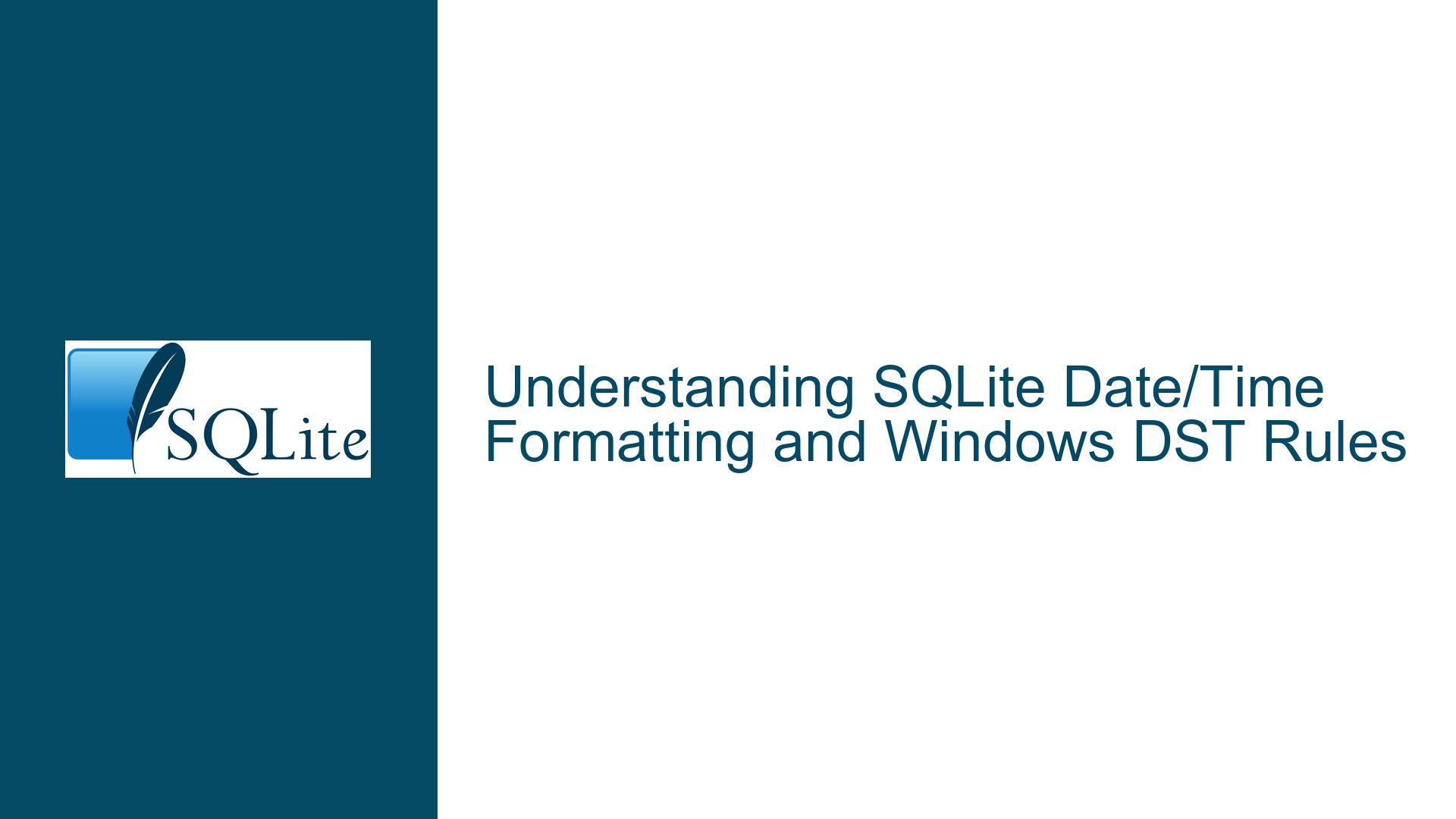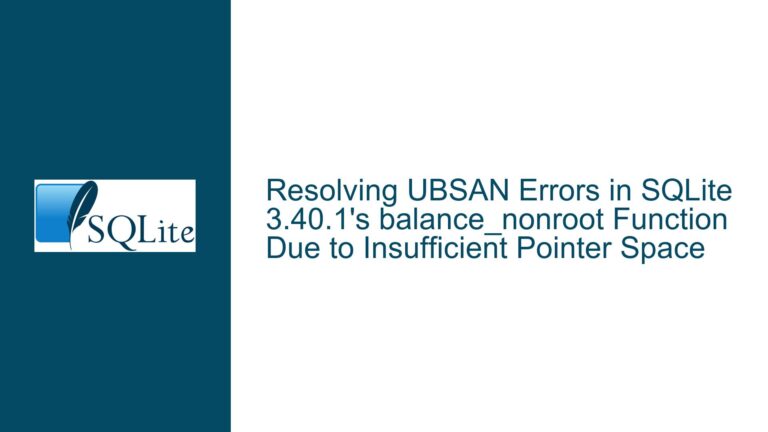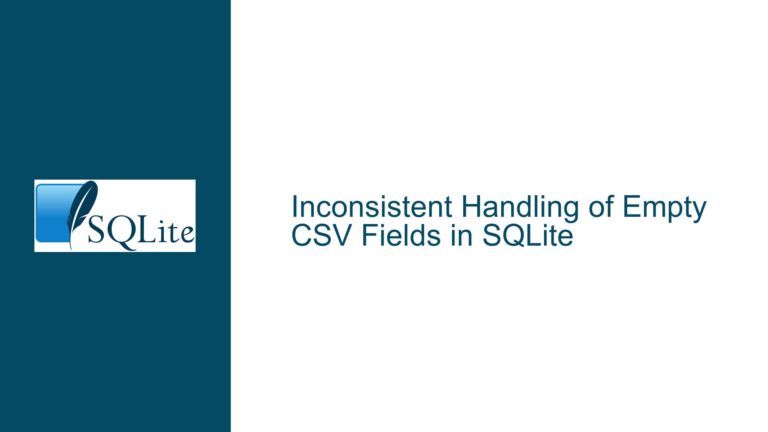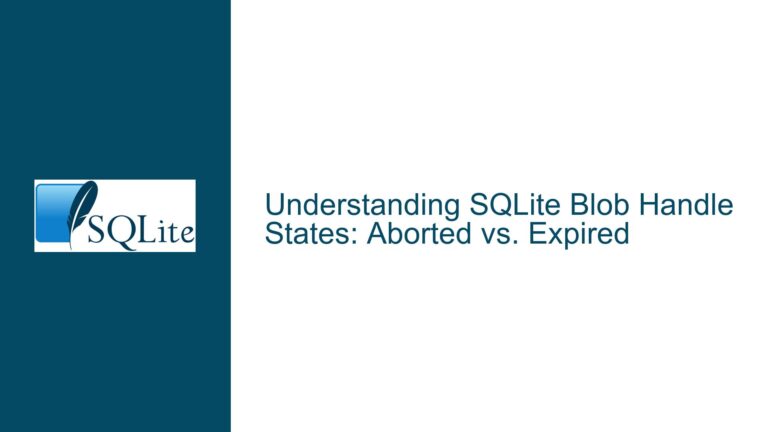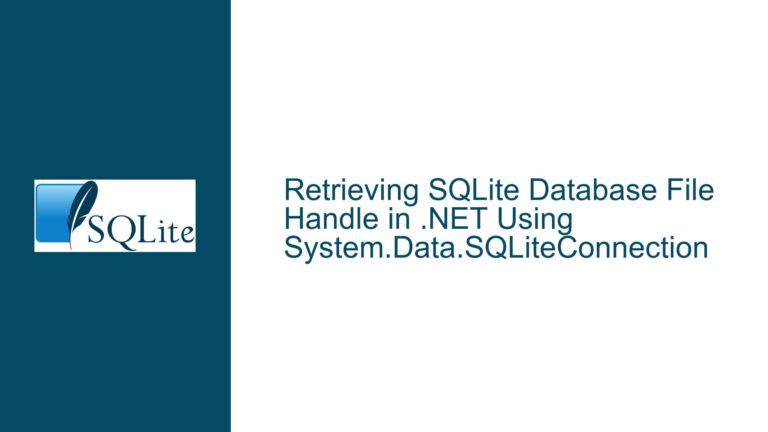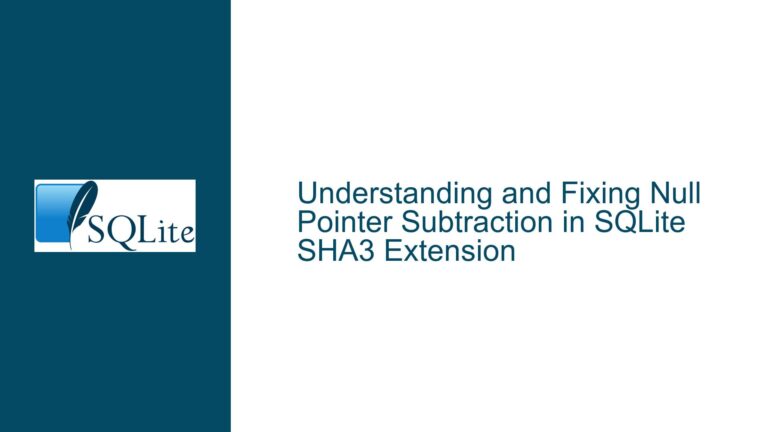SQLite Date/Time Formatting and Windows DST Rules
SQLite Date/Time Functions and Windows DST Rule Limitations
SQLite’s date and time functions are powerful tools for handling temporal data, but they rely heavily on the underlying operating system’s capabilities, particularly when it comes to timezone conversions and Daylight Saving Time (DST) rules. The documentation for SQLite’s date/time functions mentions a critical limitation related to Windows platforms: "Non-Vista Windows platforms only support one set of DST rules. Vista only supports two." This statement raises questions about the behavior of SQLite’s date/time functions on modern Windows systems, such as Windows 7, 8, and 10, and whether the documentation is outdated or still accurate.
The core issue revolves around how SQLite handles timezone conversions and DST rules on Windows platforms. SQLite uses the operating system’s localtime functions to perform these conversions, which means that the accuracy and flexibility of SQLite’s date/time functions are directly tied to the capabilities of the Windows API. Specifically, the limitation in the number of DST rule sets supported by Windows can lead to inaccuracies in timezone conversions, especially when dealing with historical or future dates.
The Windows API, prior to Windows Vista, only supported a single set of DST rules for each timezone. This meant that all timezone conversions, regardless of the date, were based on the current DST rules. Windows Vista introduced support for two sets of DST rules: one for dates before a specified "break date" and one for dates after. However, even in modern Windows versions (Windows 7, 8, and 10), the API does not fully support multiple DST rule sets beyond the two introduced in Vista. This limitation can cause SQLite to produce incorrect localtime conversions for dates that fall outside the range covered by the current and future DST rules.
In contrast, operating systems like Linux use the complete IANA timezone database, which includes historical and future DST rules for all timezones. This allows for accurate timezone conversions across a wide range of dates. SQLite, when running on such systems, can leverage this comprehensive data to provide more accurate results. However, on Windows, SQLite is constrained by the limitations of the Windows API, which does not provide access to the full IANA timezone database.
Interrupted Write Operations Leading to Index Corruption
The limitations of the Windows API in handling DST rules can be traced back to the way the Windows registry stores timezone information. In versions of Windows prior to Vista, the registry only allowed a single set of DST rules per timezone. This single rule was applied uniformly to all dates, from the earliest possible date (often referred to as the "Big Bang") to the latest possible date (the "Last Whimper"). This design was simplistic and did not account for changes in DST rules over time, leading to inaccuracies in timezone conversions for historical or future dates.
Windows Vista introduced a more flexible registry format that allowed for two sets of DST rules: one for dates before a specified "break date" and one for dates after. This change was intended to provide better support for timezone conversions, particularly in cases where DST rules changed. However, even with this improvement, the Windows API still falls short of the capabilities provided by the IANA timezone database. Modern Windows versions (Windows 7, 8, and 10) retain this two-rule limitation, despite the registry format technically allowing for more than two sets of DST rules.
The inconsistency in how Windows handles DST rules can be attributed to the complexity of the Windows API and the historical evolution of the operating system. Microsoft’s documentation states that Windows only supports a single set of "current timezone translation parameters" that are in effect from the earliest possible date to the latest possible date. While Windows does allow for a "current" and a "future" set of DST rules, the "current" rules are applied uniformly to all dates, regardless of whether they fall within the "current" or "future" range. This behavior is a result of the way the Windows API processes timezone information, and it highlights the challenges of working with temporal data on Windows platforms.
The limitations of the Windows API have significant implications for SQLite’s date/time functions. When SQLite is running on a Windows platform, it relies on the localtime functions provided by the Windows API to perform timezone conversions. If the API only supports a limited number of DST rules, SQLite will be unable to accurately convert dates that fall outside the range covered by those rules. This can lead to incorrect results when querying or manipulating temporal data, particularly in applications that require precise timezone conversions for historical or future dates.
Implementing PRAGMA journal_mode and Database Backup
To address the limitations of SQLite’s date/time functions on Windows platforms, developers can take several steps to ensure accurate timezone conversions and mitigate the impact of DST rule limitations. One approach is to use the PRAGMA journal_mode command to enable Write-Ahead Logging (WAL) mode, which can improve the reliability of SQLite databases in the event of a power failure or other interruption. WAL mode allows SQLite to continue processing transactions even if the database file is locked, reducing the risk of corruption and ensuring that data remains consistent.
Another important consideration is the use of database backups to protect against data loss or corruption. Regular backups can help to ensure that temporal data is preserved, even in the event of a system failure or other issue. SQLite provides several tools for creating and managing database backups, including the .backup command and the sqlite3_backup API. These tools allow developers to create full or incremental backups of their databases, which can be restored in the event of a failure.
In addition to these general best practices, developers can also take steps to address the specific limitations of SQLite’s date/time functions on Windows platforms. One approach is to use an external library or extension that provides more comprehensive support for timezone conversions. For example, the IANA timezone database can be used to populate an SQLite database with historical and future DST rules, allowing for more accurate timezone conversions. This approach requires modifications to the SQLite core to enable additional offset tracking, but it can provide significant benefits in terms of accuracy and flexibility.
Another option is to use a custom extension that overrides SQLite’s default date/time functions to handle IANA timezones properly. This approach requires access to SQLite’s internals and is not a simple extension, but it can provide a more robust solution for applications that require precise timezone conversions. By using an extension, developers can ensure that SQLite’s date/time functions are able to handle the full range of DST rules provided by the IANA timezone database, regardless of the limitations of the underlying operating system.
In conclusion, the limitations of SQLite’s date/time functions on Windows platforms are a result of the constraints imposed by the Windows API. While these limitations can lead to inaccuracies in timezone conversions, there are several steps that developers can take to mitigate their impact. By using PRAGMA journal_mode to enable WAL mode, implementing regular database backups, and leveraging external libraries or extensions, developers can ensure that their SQLite databases are able to handle temporal data accurately and reliably, even in the face of DST rule limitations.
